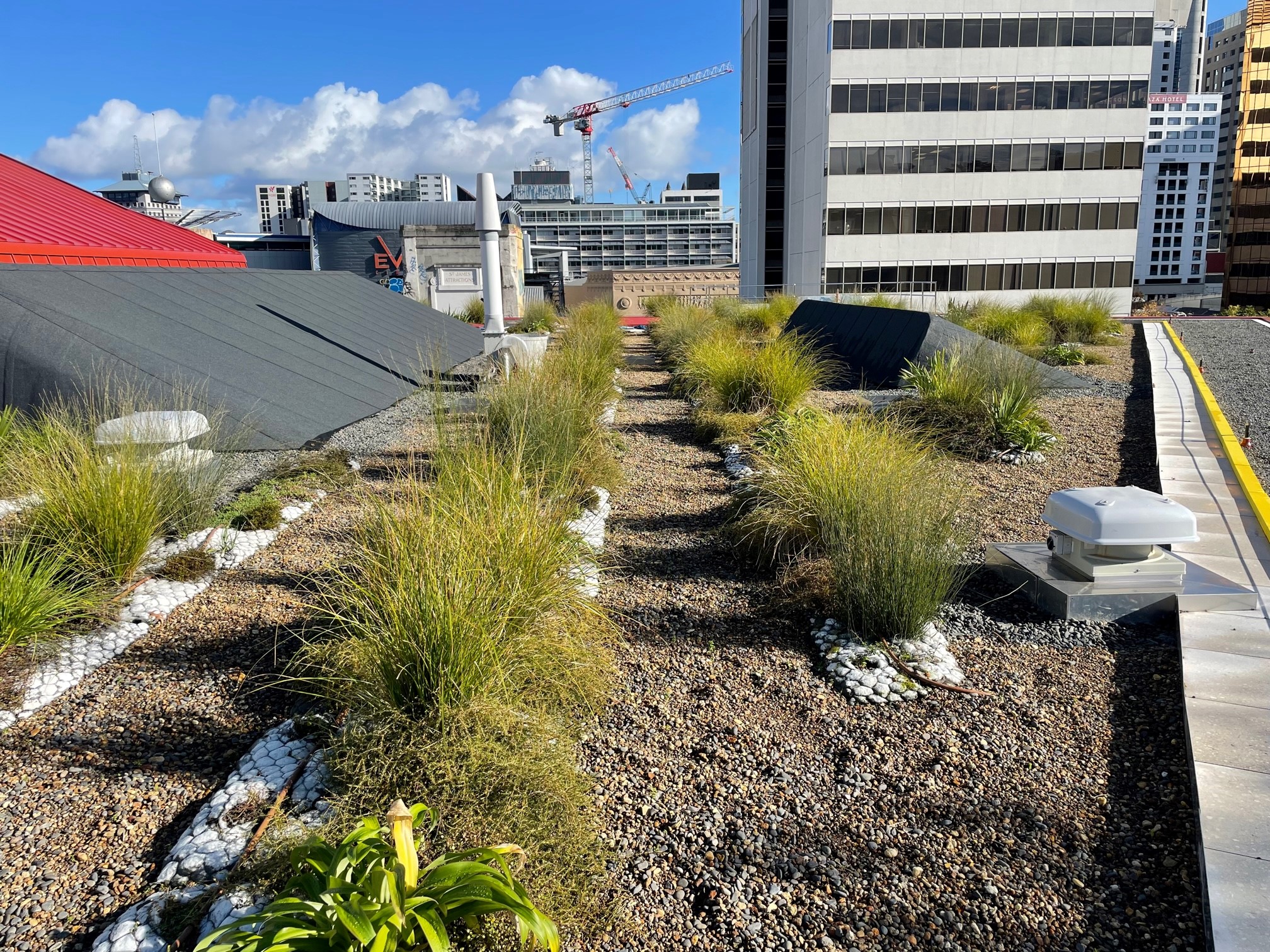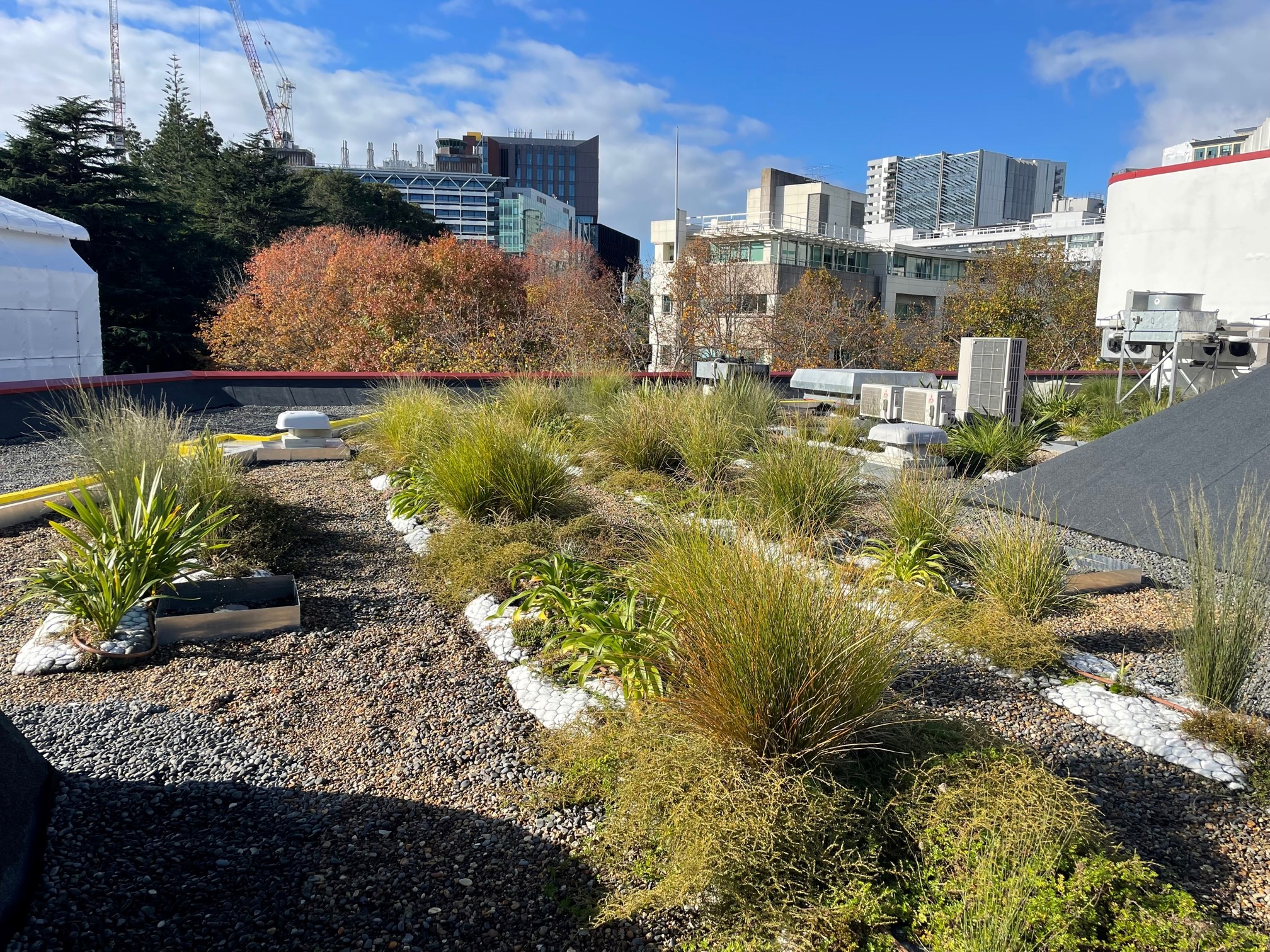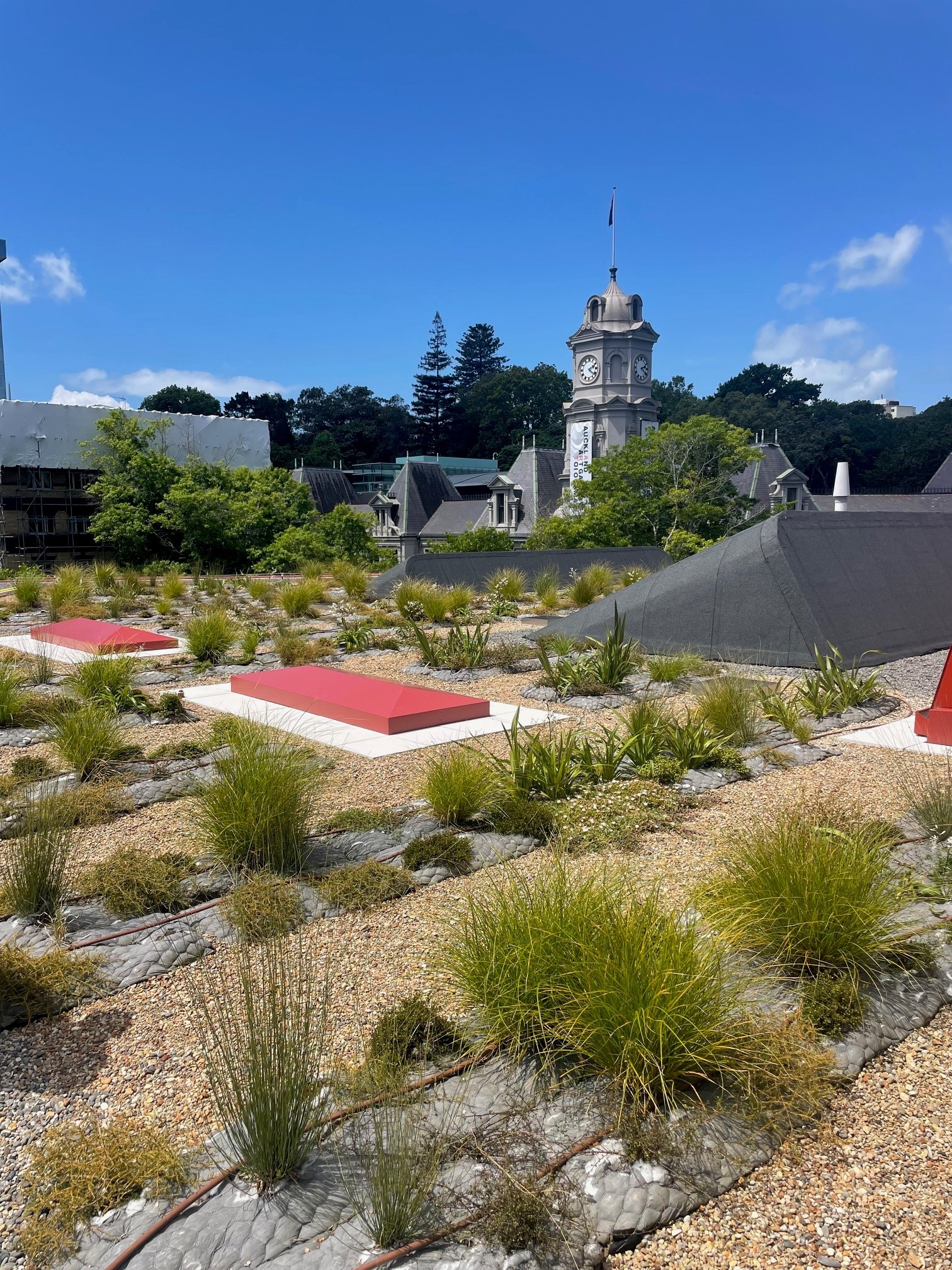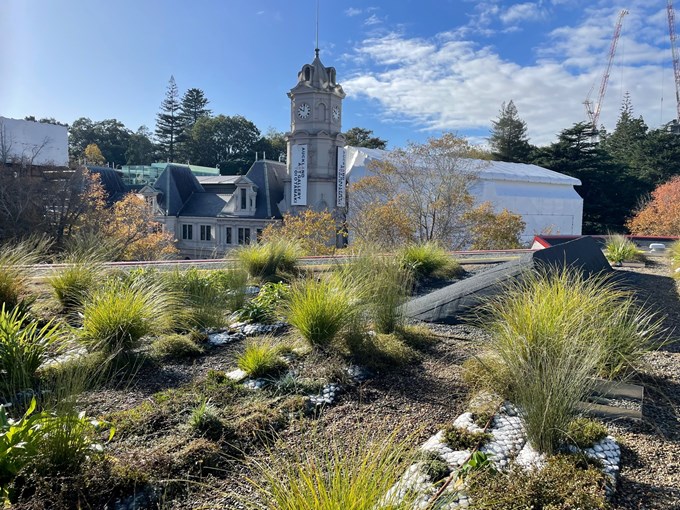It is a year since Auckland Council installed its largest 'living roof' on a council-owned building, the Central City Library Tāmaki Pātaka Kōrero.
Over 2000 low-maintenance, hardy native plants, propagated by local iwi Ngāti Whātua Ōrākei, were planted and one year on those plants are thriving.
Planning, Environment and Parks Committee Chair, Councillor Richard Hills, says living roofs aren’t just attractive, they have a host of environmental benefits too.
“In recent months we’ve seen the result of changing weather patterns which are becoming more extreme. Our city’s water management infrastructure was designed for a once-in-a-century event.
“Where in the past gardens and parks did most of the heavy lifting absorbing water, in today’s concrete jungles excess water has nowhere to go. Increasing vegetation and mimicking natural systems is one of the ways we can make our city spongier and improve its climate change resilience,” adds Hills.
The plants were chosen for their ability to survive extreme conditions on the exposed roof environment including high-intensity rain, strong winds, heat, and drought. They have established themselves and are now flourishing.
When speaking about the project Ngāti Whātua Ōrākei say they have long been advocates of living infrastructure and emphasise the need to do things differently in the city, to think about how we live within te taiao (the natural world) and this project is an example of how our built environment doesn’t need to be separate from the natural environment.
The plants on the roof are being followed closely by ecologists in the council to measure their health and survival.

Auckland Council’s Principal Advisor Conservation, Rebecca Stanley says, “We are still learning about which NZ native plants do well on roofs as most of the research on plants for living roofs is from overseas. These plants will help us make the best plant choices for future roofs in Auckland”.
It is estimated the library living roof system can store between 5 - 10 litres of water per square metre before the excess rainfall is either slowly released to the piped stormwater network or taken up by the plants through the evapotranspiration process.
Auckland Council’s Healthy Waters Project Lead, Rachel Devine says, “Living infrastructure is not the answer to all stormwater challenges, but a part of the suite of tools we can use to reduce the level of impact.”
“We hope we’ll get improved data over the next year on exactly what the library roof is capable of storing from a rainfall perspective to inform future living infrastructure projects.”
To acquire that data, a collaboration has been developed between Auckland Council and Auckland University’s Masters’ programme whose students will provide useful monitoring data to inform future ‘living’ designs.

Associate Professor Asaad Shamseldin, Department of Civil and Environmental Engineering has been integral in setting up the trial.
“We are lucky to have access to the University of Auckland’s engineering roof and purpose-built ‘Flow Lab' which provides the perfect set-up to perform controlled trials on how living infrastructure could contribute to improved stormwater management in built-up areas,” says Professor Shamseldin.
“These surfaces weren’t being used otherwise and it is known living infrastructure has a range of benefits, including the reduction of stormwater runoff, improvement of air quality, protection of roof membranes from solar damage, and increasing biodiversity, which is why some countries are using policy to mandate the installation of living roofs,” adds Councillor Hills.
What better contribution could they make to the value of the environment?



